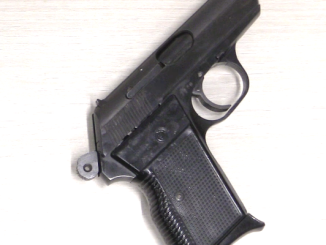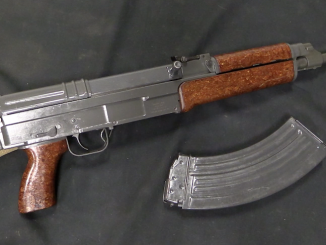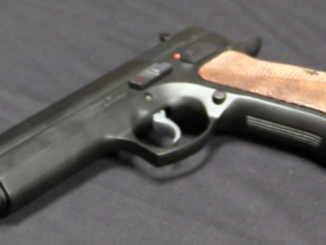Brno’s ZB-26 was one of the best light machine guns of the 1920s, and it was widely adopted by countries that did not have domestic arms design and production capacity (and it would eventually become the British Bren gun as well). It was designed for the 8mm Mauser cartridge, and had a simple fixed gas system that ran very well – until countries began following the German lead in moving to standard use of s.S. (schweres Spitzgeschoß; heavy ball) ammunition. This put undue strain on the ZB-26 mechanism, and so an improvement was made to include an adjustable gas system that could be set to accommodate a variety of loadings. This experimental model was the ZB-27, and it was tested by Romania in the late 1920s.
Romania like the design, and adopted it in 1930, purchasing guns from Brno and also buying a license to produce them at the Cugir factory complex in Romania. Today we are taking a look at two examples of Romanian ZB-30s, one Czech-made and one Romanian-made. They both incorporate a number of improvements over the ZB-26 (improved barrel latch security, rear monopod socket, bipod locking lever, etc) but also have a few minor differences between each other.
Thanks to the Southern Iceland Shooting Association for helping me film these and other cool guns in Iceland!




Cugir is pronounced “coo-jeer”
czechoslovakian, czechs and slovaks together. especially after WWII there were armories and gun designers from Slovakia as well. Yes, beginings, there were a lot of good czech designers, but it was Czechoslovakia and Czechoslovakian army.
The German move to standard use of schweres Spitzgeschoss (sS) was decreed on 6th March 1930 by Oberste Heeresleitung. In my view it cannot be the reason for the creation of the ZB-27, tested in the late 1920.
Correction: late 1920s
https://www.vhu.cz/exhibit/cs-lehky-kulomet-zb-vz-27/ claims that
Regulátor tak umožňoval nejen použít zbraň jako opakovací, ale především nastavením velikosti přepouštění vyladit funkci zbraně při použití střeliva rozdílných parametrů a v různých klimatických podmínkách.
Which if I understand correctly enough means that newly added Regulátor allowed to use said machine gun like repeating rifle (needs to cycle manually after each shot), allowed usage of ammunition with varying parameters and in various environment conditions.
Question: was first feature requested by some customer or it was just side-effect?
One of the things that’s really lacking with any current material out there on just about any machinegun is the focus on the gun itself. There’s more to it, than that…
Machineguns are a component in a system. A full evaluation of one should include things like the tripod, the ammo feed systems, the issued accessories, and all the rest.
One of the things that made the Germans so effective with their weapons is that they issued them with a full kit of add-on items like range-finders, spare parts, tools, and all the rest of the classic German “toy chest” stuff so beloved of re-enactors. That material and equipment made a hell of a difference to how effective they were with those weapons.
Little things make a big difference. I recall reading Peter Kokalis talking about his efforts in El Salvador, and how the limited support given to the El Salvadorian military with our “gift” M60 machineguns created massive issues with how effective they were. He was taking rear sight leafs down with him, and installing them, rendering the guns a lot more effective. There was also the use of simple stuff like stove black paint on the feed tray covers, rendering them no longer bright and shiny…
It’s a lot of little things, working together, that make the system surrounding a machinegun work. You really have to look at the whole thing in order to evaluate it all.
I’ve seen a picture of an M2 in position in a Ukrainian trench with a cellphone taped to the sight, so to have a periscopic sight.
No wonder that the Romanians did not pay.
Ministry of War in Romanian is ‘Ministerul de Război’
I gather this was one of numerous Romanian loan-words from Slavic vocabularies.
However; ‘Razboj’/’Rozbój’ in some Slavic languages means ‘robbery’.